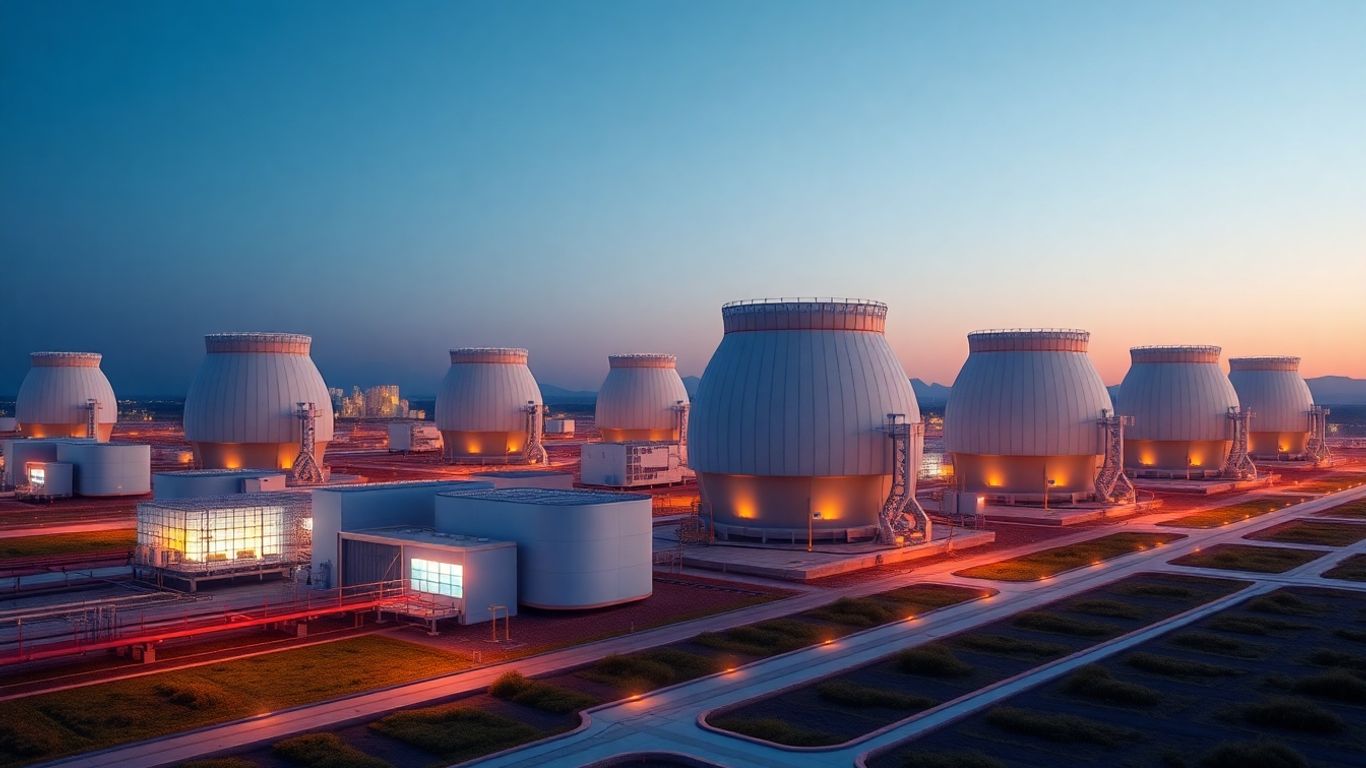Nuclear power developers are charting an ambitious course for the UK’s energy future, with plans to construct over 20 Small Modular Reactors (SMRs) and Advanced Modular Reactors (AMRs) by the mid-2030s. This significant expansion is largely expected to be financed through private investment, signaling strong confidence in the sector.
Key Takeaways
- Over 20 SMRs and AMRs are targeted for deployment in the UK by the mid-2030s.
- Private funding is a primary driver for these new nuclear projects.
- The US and UK have formalized a partnership to accelerate the deployment of SMRs, AMRs, and micro-modular reactors.
Ambitious Deployment Goals
Companies like X-energy, backed by Amazon, are collaborating with British energy giant Centrica. Their joint venture aims to build up to 12 Advanced Modular Reactors in Hartlepool, with a broader UK-wide ambition to deploy a fleet totaling 6GW of nuclear power. X-energy’s Xe-100 reactor, an 80MWe design scalable to a 320MWe four-reactor plant, is central to these plans. The company has already secured over $1.5 billion in private funding and believes that supportive government policies can unlock further private investment for their UK program.
Private Funding and Government Support
While some developers require no public funding, others are seeking visible support for initial projects to de-risk investments and attract private capital. X-energy, for instance, is looking for a financing framework similar to the partial US government support that unlocked $1.5 billion in private investment for their projects in the United States. This approach, they believe, can be replicated in the UK at a lower cost to taxpayers.
Regulatory Landscape and Site Development
The development of SMRs is also influenced by regulatory frameworks. X-energy and Centrica plan to submit a Development Consent Order (DCO) and other necessary permits and licenses in 2026, with the goal of having the first power online by the mid-2030s. Discussions are ongoing with the UK government regarding the Semi-Urban Population Density Criterion (SUPDC), with hopes that the inherent safety features of new reactor designs will be fully recognized, potentially opening up more sites for development.
Holtec’s Data Centre Project
Holtec, in partnership with EDF and Tritax, is planning to develop advanced data centers powered by SMRs at the former Cottam coal-fired power station. This project is valued at £11 billion, with Holtec actively engaging potential investors, including export credit agencies and investment funds. Holtec anticipates commencing nuclear construction in 2029, with the first reactor expected to produce power just over three years later. Tritax, focusing on the data center aspect, does not anticipate needing public funds for its component of the project.
Economic and Skills Implications
The push for a nuclear renaissance is seen as a positive signal for the industry, promising visible economic benefits for communities. Experts emphasize the need for efficient delivery, clear regulatory pathways, and the development of a skilled workforce across various sectors, from planning and engineering to digital innovation. The growth of AI and its associated energy demands presents both challenges and opportunities for job creation and aligned development objectives within the nuclear sector.












